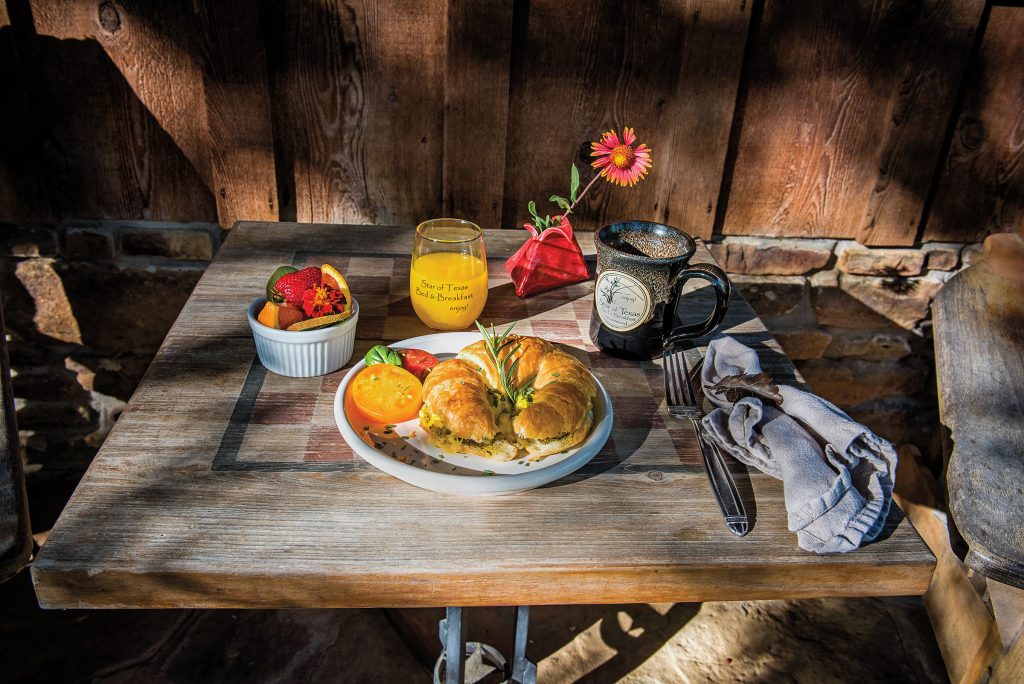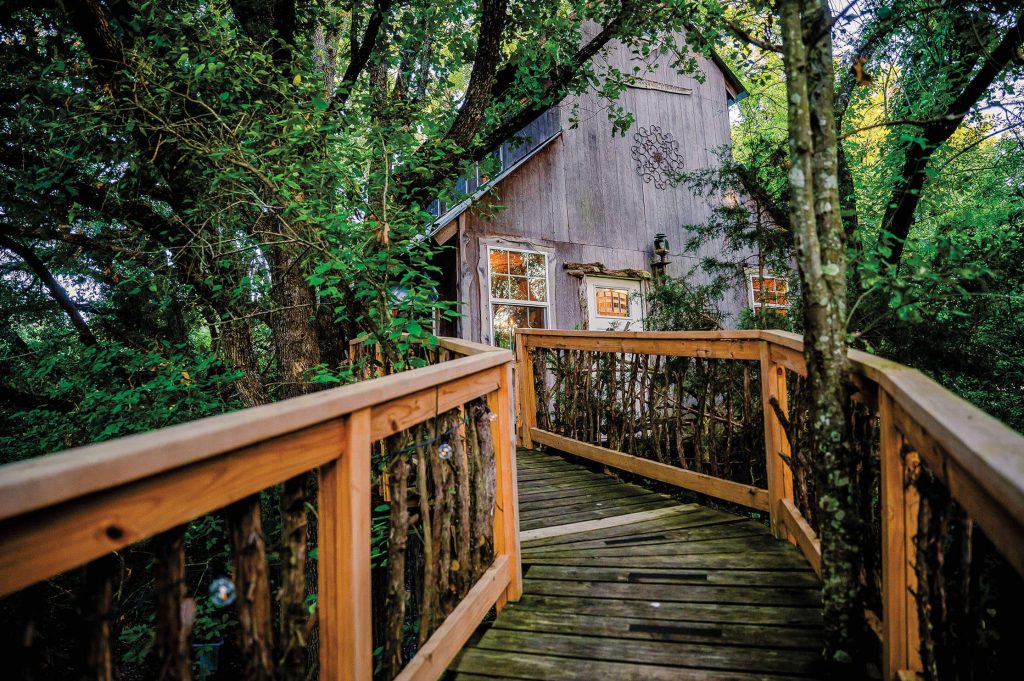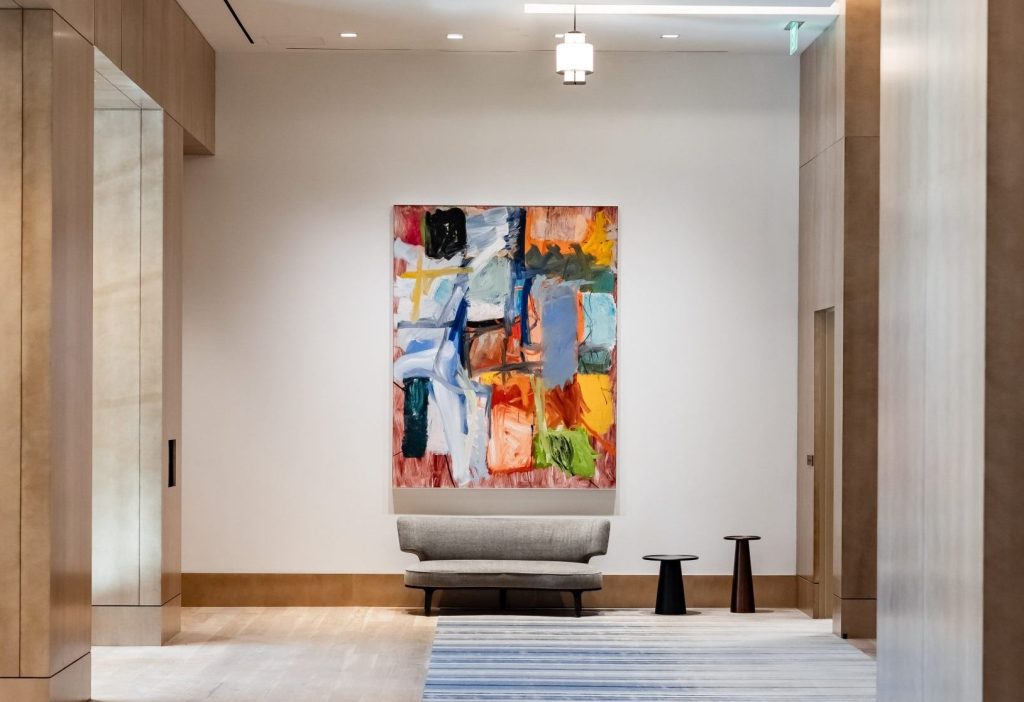As the sun sets on Fossil Rim’s Foothills Safari Camp—about the closest you’ll get to an authentic African safari camp in Texas—white African addax promenade in single file to the watering hole. These critically endangered beasts, magnificent with their long curvy horns, seem at ease here amid their fellow ungulates: fallow deer, waterbuck, and the striking African gemsbok. An outspoken sandhill crane named Ichabod, the self-appointed watchman of this camp, flies in to confirm that all is well. Here on the 1,800 rolling acres of Fossil Rim Wildlife Center in Glen Rose, the circle of life is playing out in full force, and its lessons, for both adults and kids, are powerful.
There are several drive-through exotic animal ranches in Texas, but when it comes to conservation, Fossil Rim is in a class of its own. The first nontraditional zoo to gain accreditation from the American Zoo and Aquarium Association, in 1986, Fossil Rim is a nonprofit that has been rehabilitating endangered and vulnerable species for 35 years. Many of the animals are now born at Fossil Rim through successful conservation breeding programs; others, like some of the endangered Mexican gray wolves, are captured in the wild in partnership with groups like the U.S. Fish and Wildlife Service. Some animals have been able to return to the wild. Fossil Rim is famous for its cheetah program—more than 200 baby cheetahs, a vulnerable species native to Africa, have been born here. The animal sanctuary hopes to welcome a new baby black rhino if Salsa, a female rhino, continues to show “courtship behavior” toward Uhuru, the male rhino next door.
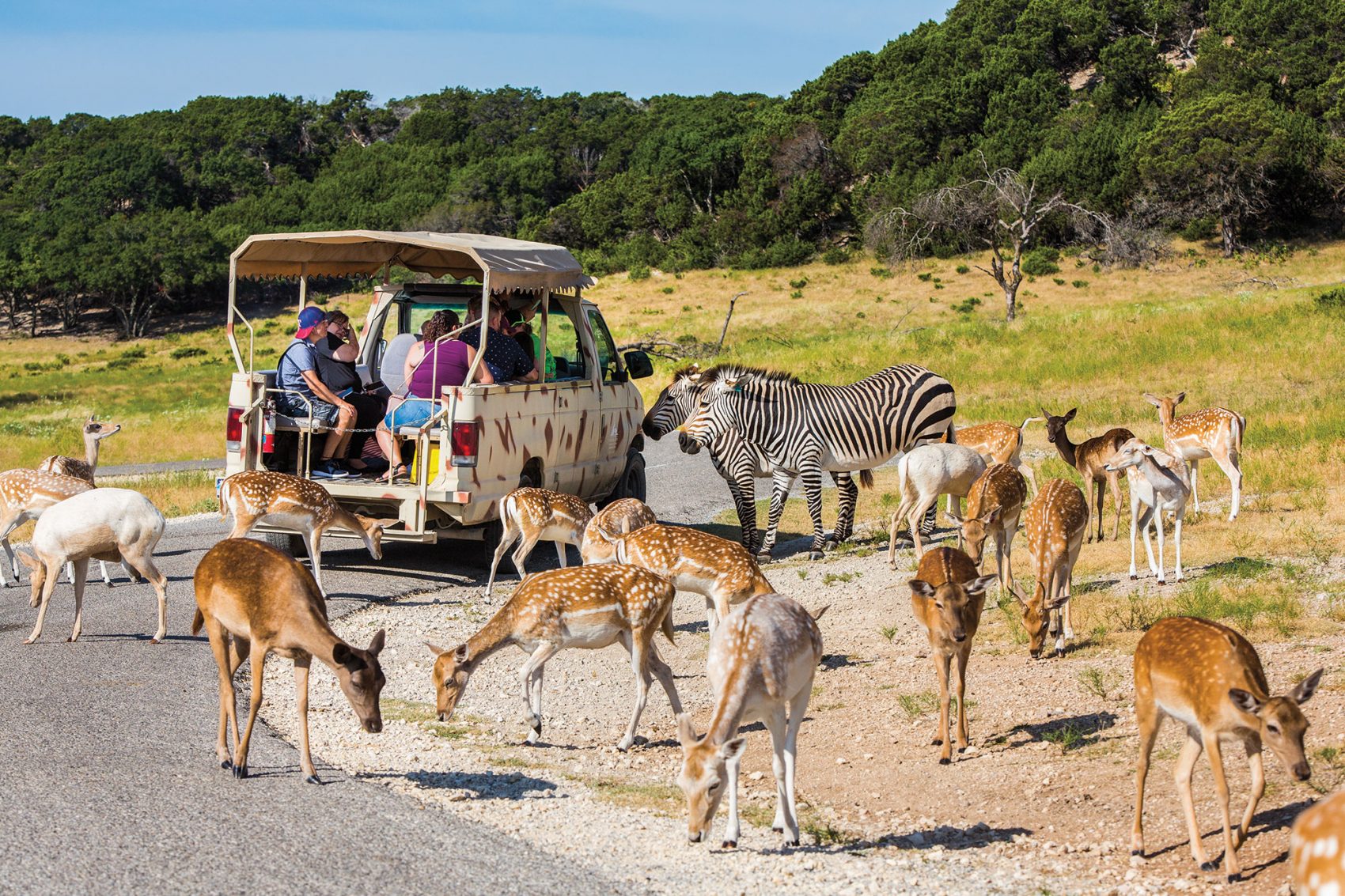
An overnight stay at Foothills Safari Camp’s cabins immerses visitors in the daily and nightly goings-on of the animals in the park. Fossil Rim began as a private ranch owned by Tom Mantzel, a Fort Worth oil man and hunter who became an impassioned steward of endangered animals and eventually opened the ranch to the public in 1984.
Foothills, just one of the on-site lodging areas, is composed of seven cabins just big enough to squeeze in two people each. Even at capacity, the camp stays cozy and quiet. The cabins’ front porches are prime observation decks. When the stars begin to fill the sky, the animals retreat from the watering hole to the woods, and the Mexican wolves sing their evening song.
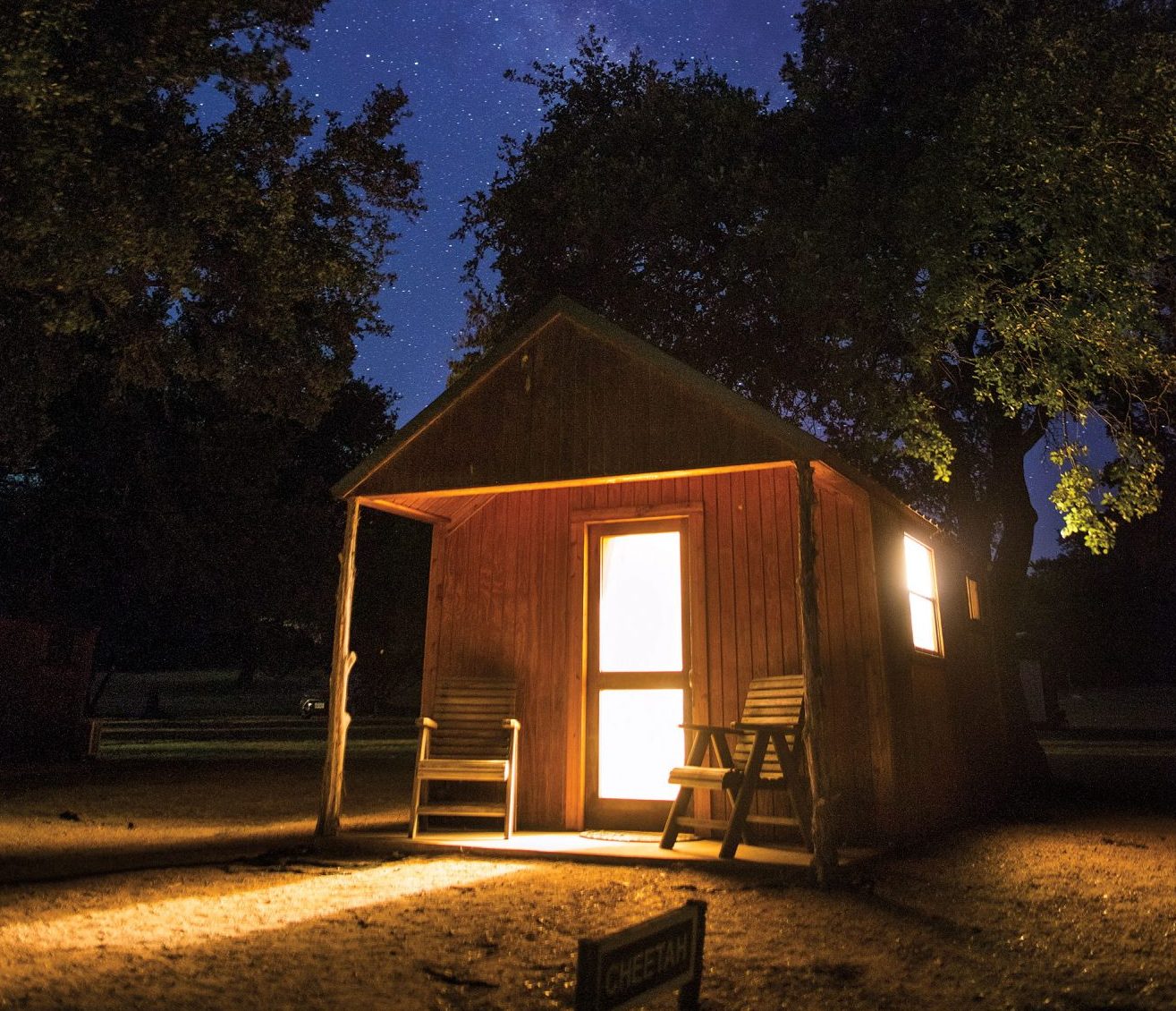
The Foothills Safari Cabins. Photo: Tom McCarthy Jr.
Most daytime visitors choose to take the two-hour self-guided drive on Gosdin Scenic Drive, a paved road that winds just over 7 miles through the ranch. You can marvel at zebra, giraffe, and other creatures; throw them the feed provided at check-in; and pull over to admire the rolling hills. The 8:30 a.m. guided “Behind the Scenes” tour takes place just after breakfast, which is served in the camp’s dining room. This three-hour tour, suitable for children 7 and above, is the best way to learn about the animals and the park’s role in sustaining them.
Jack Francis, our informative and passionate guide, shared enlightening facts, like how the spots on the cheetahs’ tails are unique, giving each its own “bar code.” And he engaged the children in discussion about how challenges like habitat loss, the black market, and hunting put many of these species’ survival at risk. Francis also helped us lure over a 16-foot giraffe named Shiner, who gobbled the lettuce leaves we were holding with her big black tongue—a thrill that made even the most serious grown-ups on our tour laugh like kids.
Even after just one night at Foothills Safari Camp, we drove away changed, more in awe of Earth’s wild creatures and the humans who help them stick around.
—Clayton Maxwell
Some of Texas’ greatest gems are hidden just a couple miles from the highway. Take a quick detour off US 290, northeast of Brenham, and you’ll stumble onto The Inn at Dos Brisas, a ranch resort that has expertly mixed old-school cowboy ambiance with foodie flair since 2004.
Dos Brisas stays true to the state’s reputation for wide open spaces, with just nine Spanish-style haciendas and casitas on 313 acres. The grounds are so spread out that each guest has access to a golf cart for traversing the property. “Dos Brisas” translates to “two breezes,” which is fitting given that’s all you’re likely to hear when lounging on the outdoor daybeds.
The lodgings combine rustic Texas charm and contemporary comforts. Oak ceilings give the illusion of a log cabin, but the plush Western furnishings feel more like they’d belong to an oil baron than a woodsman. Time seems to slow down thanks to relaxing amenities—a heated private pool, jacuzzi, and bath salts. The experience feels even more private thanks to a butler’s pass, an old-school service entrance to each hacienda that allows the staff to drop off breakfast or a bottle of wine in a cupboard without barging in.
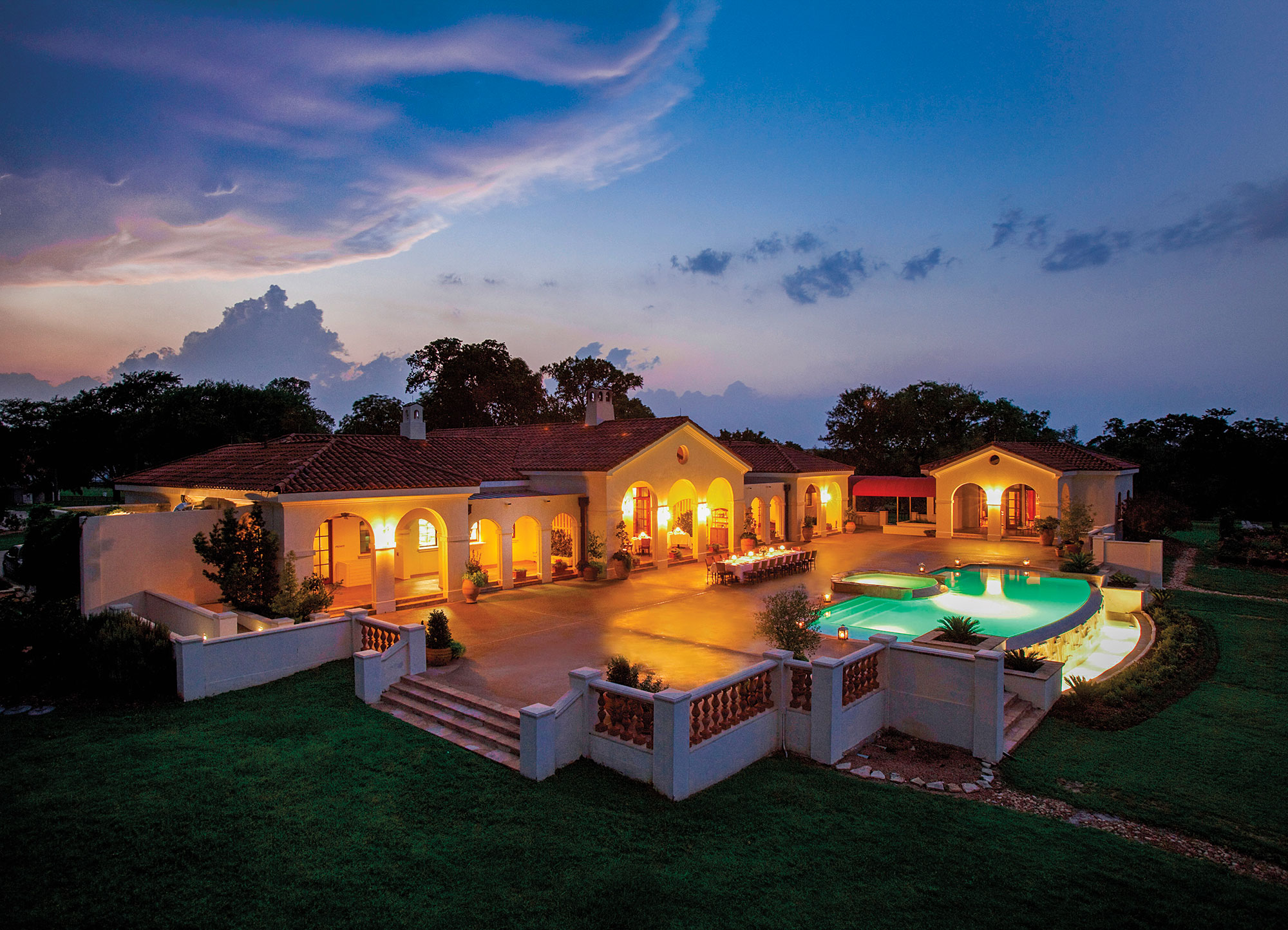
According to general manager Jonathan Cartwright, privacy is what sets Dos Brisas apart. “I think the most relaxing element is the amount of tranquil space throughout the property, allowing precious alone time,” he says.
Of course there’s Wi-Fi, but Dos Brisas specializes in unplugged experiences. It boasts one of the largest equestrian centers in the state, with lessons for beginners. Novices can also enjoy a trail ride past picturesque ponds and clucking chickens in their coops. Also, be sure to stop at the clay target shooting stations.
Prefer an afternoon by the water? Take a dip in the infinity pool, or pull up a chair and fish at a pond full of striped bass.
No stay at Dos Brisas is complete without a visit to the Inn at Dos Brisas Restaurant. Stephen King, general manager of Dos Brisas Farms, grows most of the produce on-site and communicates with the culinary team daily, updating them on the seasonal vegetable harvests. He’s particularly proud of their tomatoes.
“We have a full greenhouse of heirloom tomatoes including Cherokee purple, Kellogg’s breakfast, Brandywine, lemon boy, and black cherry,” King says. “Black plum is also a favorite that often winds up in our bloody marys.”
Tour the greenhouses with him to taste more leafy vegetables than you’ll find at a Whole Foods salad bar—there are six different types of spinach alone. Then head to the restaurant to indulge in a fine-dining experience that includes dishes featuring seldom-seen vegetable varietals like slow-roasted Bulls Blood beets served alongside Duclair duck, a breed raised right on the ranch.
Perhaps the only thing they don’t grow is wine grapes, but they make up for it by stocking 7,000 bottles. Just pop a cork, and enjoy the breeze.
—Dan Gentile
It’s still dark when I slide open the side door of the old-school camper van I’ve rented for this road trip. I breathe in deeply, and the air smells like pine.
I pour myself a glass of juice from the pint-size, built-in minifridge, and listen to nature’s version of rush hour: the occasional kerplunk of a pine cone landing on the soft ground nearby, a toad croaking in the distance. When I tug on my shoes and pad out to the picnic table, I can see the first glimmers of light reflecting off Ratcliff Lake.
To get to this treasure tucked deep in the Piney Woods of East Texas, I detoured back a few decades. I rented a 1984 Volkswagen Westfalia, equipped with a fold-out sofa, pop-up roof, tiny stovetop, dining table, and—best of all—a box of cassette tapes featuring music by Hank Williams, The Eagles, and Joni Mitchell.
As with all good adventures, the road trip itself was half the fun. I cranked down the windows and let the whipping wind and roar of the road swirl in like a storm as I bounded down the highway. When I arrived at the nearly empty Ratcliff Lake Recreation Area, about 20 miles east of the old lumber town of Crockett and deep in Davy Crockett National Forest, I rolled into a nice shady spot under the pines on the Lobolly Loop. There, I popped up the top hatch, flipped down the sofa bed, and lit a campfire.
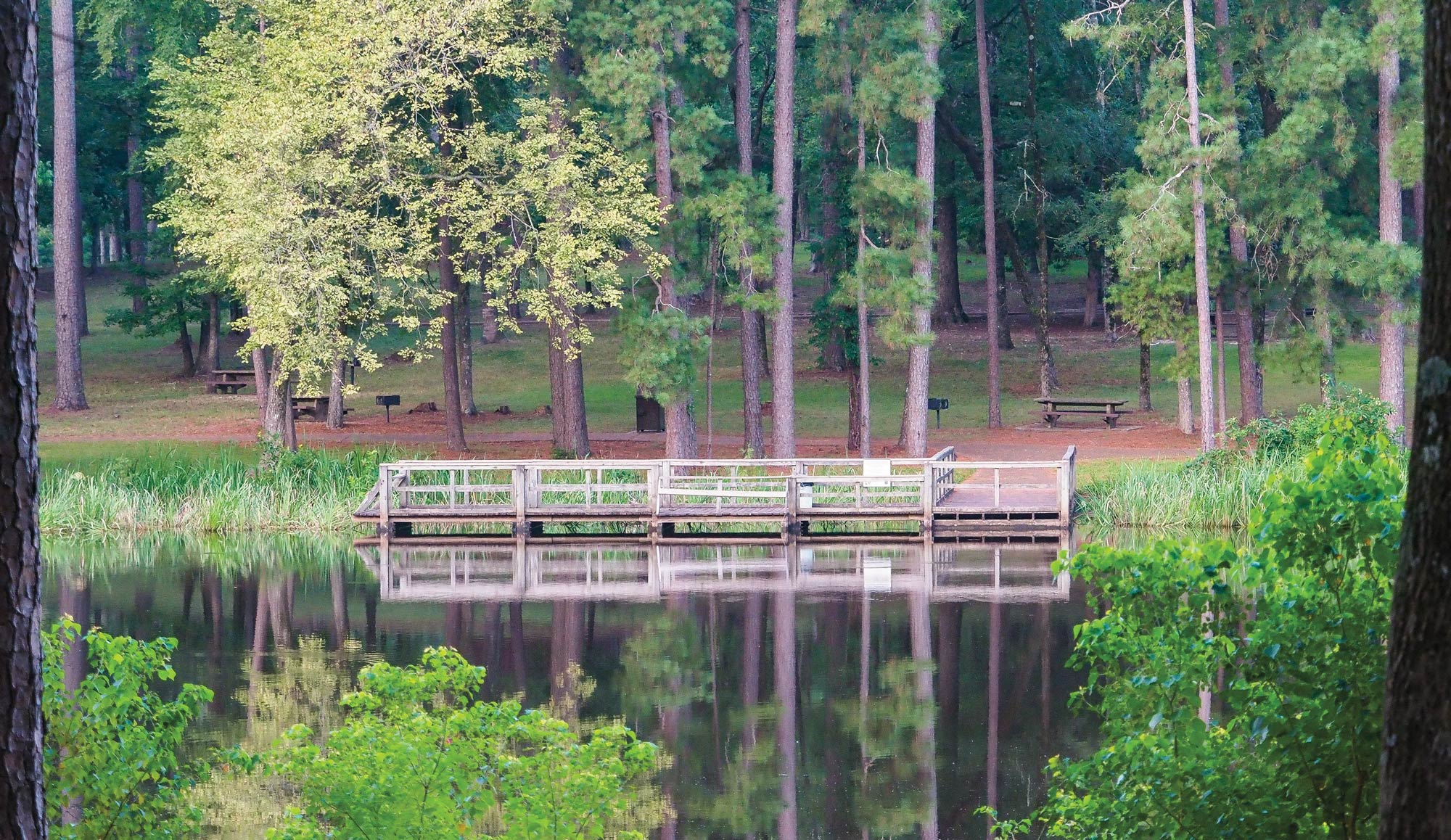
The Civilian Conservation Corps built the park, known for its fishing and deep-woods setting, in 1936. Four loops of campsites with a total of 76 slots wrap around a 45-acre, amber-hued lake that once held logs for a sawmill. Swimmers get their own roped-off area, and several piers make it easy to fish for catfish, bass, and bream. Three main hiking trails wind through the park, although some sections are currently closed to repair damaged bridges. I had stashed my bike inside the van, so I decided to explore the campground roads on two wheels.
Spring means blooming dogwood, and in the fall, visitors come to see the sweetgums, oaks, hickories, and sumac don cloaks of gold and crimson. Ratcliff Lake Recreation Area is a popular home base for those who hunt deer, dove, and turkey on adjacent national forest land in the fall and winter.
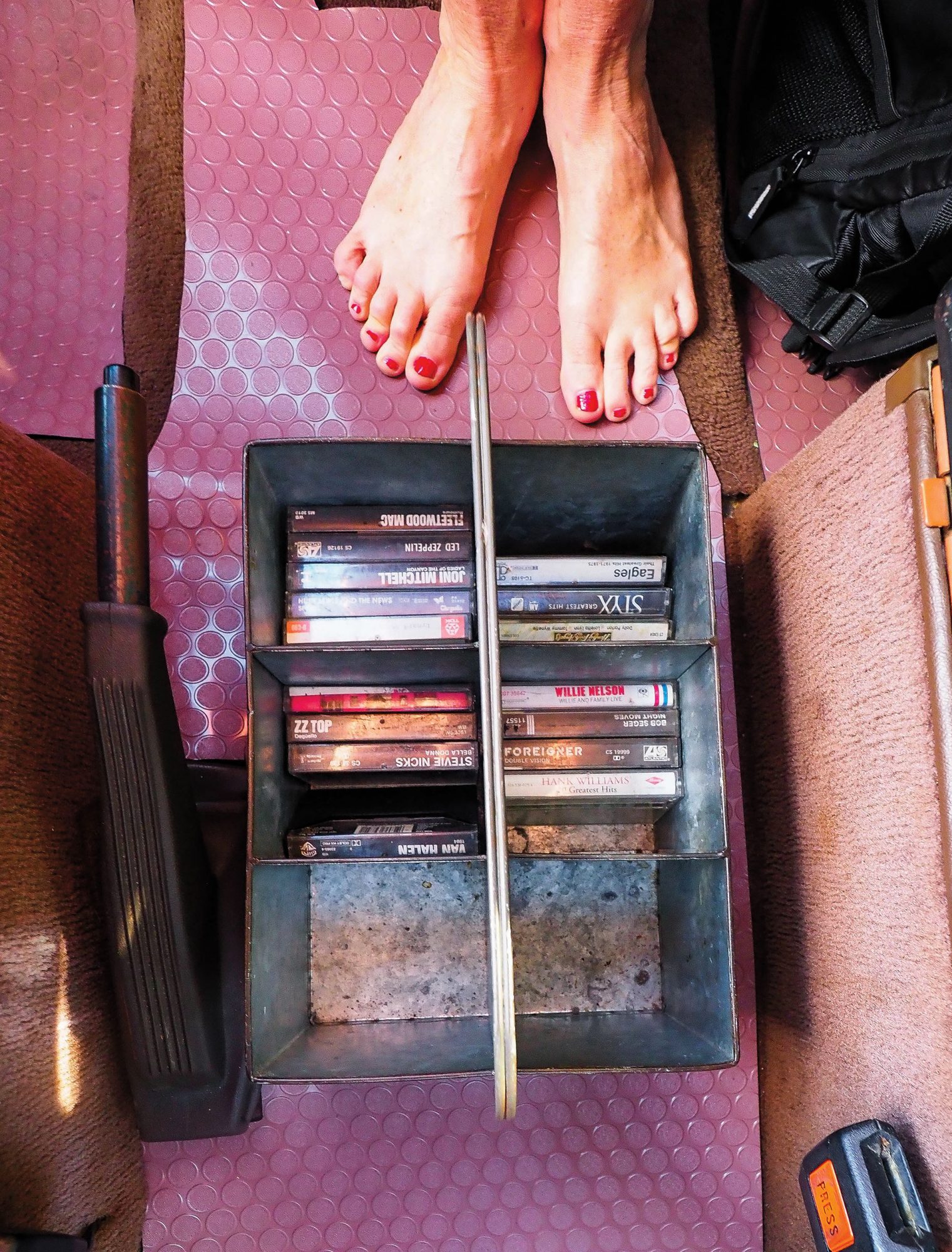
The camper also comes with cassette tapes. Photo: Pam LeBlanc
The year-round beauty comes in the hush of the tall, swaying loblolly pines that stand shoulder to shoulder around the glinting, clover-leaf shaped lake. You’ll want to kick off your shoes, walk carefully through the pine needles near the cordoned-off swim area, and lay on your back for a better view of the trees. Keep an eye out for the endangered red-cockaded woodpecker, which resides in holes it pecks in living trees.
It’s a weekend best experienced with few frills and an open mind.
—Pam LeBlanc
For nearly a decade, Rancho Loma was known as a high-end dining destination. Guests would come from all over the state to Talpa, just outside the West Texas town of Coleman, to dine at Laurie and Robert Williamson’s renovated 1870s ranch house on weekends. Some seven years ago, regulars weary of the after-dinner drive home to places as far as Midland and Fort Worth finally persuaded the Williamsons to build an inn. The owners were surprised when guests booked their five casitas for the whole weekend. “There wasn’t much to do then, and I don’t change the menu between Friday and Saturday night,” says Laurie, who serves as chef.
But as interest grew, the Williamsons began creating things to do in town. They bought and renovated 1920s buildings along Commercial Avenue, the main boulevard running through downtown Coleman, bringing some lovely structures back to life. They opened Rancho Pizzeria, a sleek but casual bistro with a menu dreamed up by Laurie. There you’ll find an appetizer of sweet piquillo chiles stuffed with goat cheese; pizzas topped with prosciutto, arugula, mozzarella, truffle oil, and béchamel sauce; and, for dessert, chocolate panna cotta. Across the street, there’s Rancho Loma Vineyards’ tasting room, where you can sample the RLV III, a white blend made in the Texas High Plains town of Brownfield. The modern space features handcrafted wooden tables, a polished granite bar, and ample room to lounge with vino and charcuterie. In the same block, visit 410 Gallery, exhibiting local fine art, and Bonneville, a home furnishings store stocking a large supply of midcentury modern furniture.
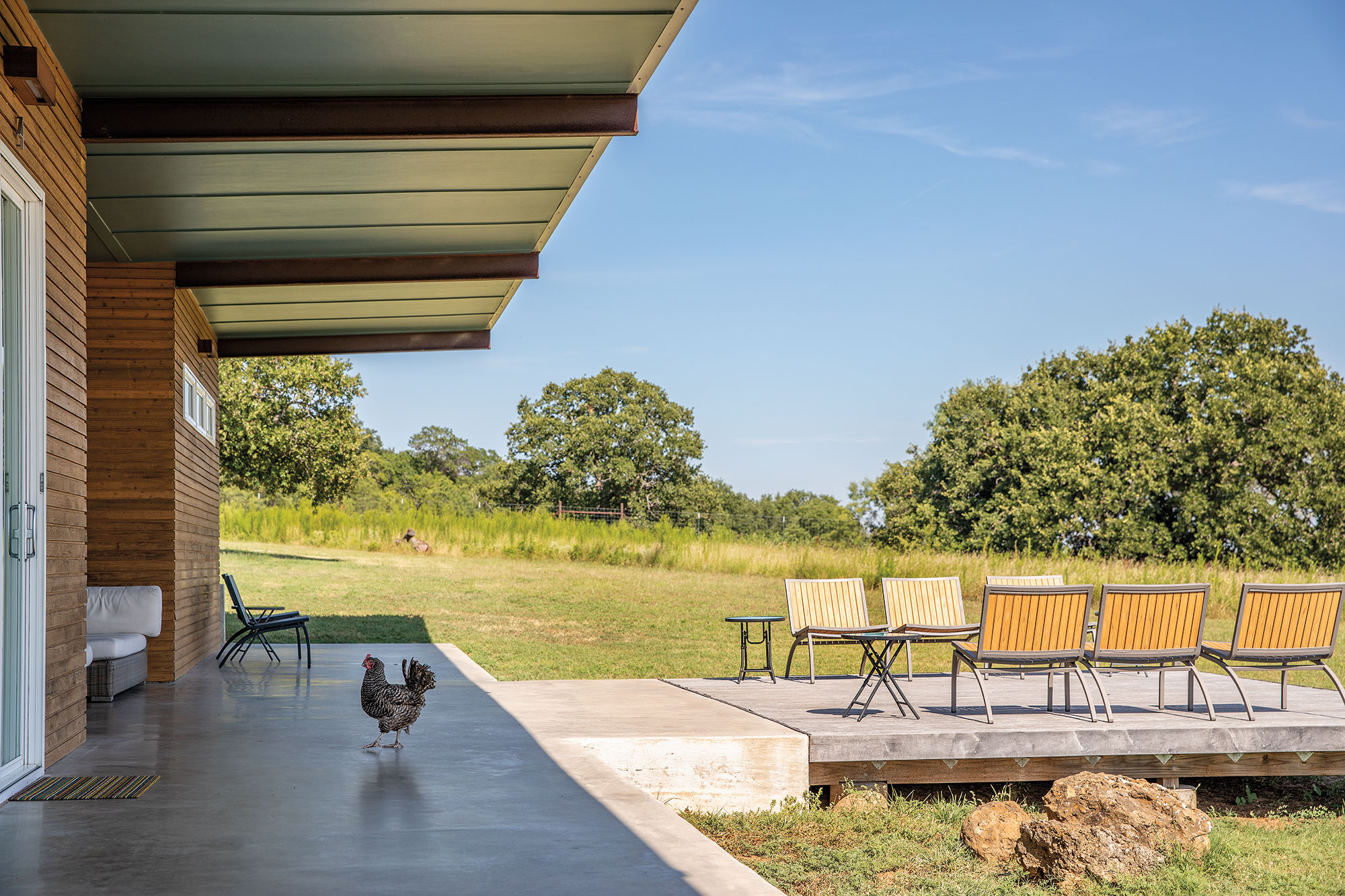
Back at the ranch, you don’t hear anything beyond the distant yips of coyotes at night and roosters during the day. (Most cell phones don’t work out here, but there’s Wi-Fi if you must check in.) Slip into a swimsuit for a dip in the pool or lounge in a porch chair while watching the sunset. Around 6 p.m., dinner service starts. Laurie’s dishes include freshly made pastas, black cod poached in coconut milk with serrano chiles, and slow-roasted lamb shoulder swept in a herb jam. Close the night out with stargazing around the firepit. The next morning, a breakfast of eggs baked in herbed cream or elegant huevos rancheros will make you wonder if you’ll ever eat this good again. Tastes just like getting away from it all.
—June Naylor
On a rocky hillside above the Terlingua Ghost Town a two-story Moorish structure looms large. Water blows from the tiers of a big stone fountain, and at the end of a long porch, an arch frames a spectacular view of the Chisos Mountains. Bill Ivey has turned the once run-down Perry Mansion, built in 1906, into a boutique hotel. Ivey grew up in Lajitas, 10 miles away, where his father owned the town. He bought the Ghost Town in 1983 so he could restore the mansion. After two years of renovating in Victorian and Southwest-style furnishings, the Perry Mansion finally opened its doors to the public in March.
The “Elsenhans” ground-floor suite—one of eight guest rooms—is luxurious, cool, and cavernous with heavy wooden shutters blocking the glaring sun. The bathroom has an immense tub, elaborate tile work, and a crystal chandelier. Pointing out a patch of rough rock wall, Ivey says he wanted to show some of the past—for each room to tell a story.
The home was once owned by Howard Perry, who also owned the mercury mine below it. The mine sunk eight shafts in the desert, and miners carried the ore by hand in buckets to a furnace. The mine opened in 1903 but went bankrupt in 1942. During that time, Ivey estimates, about 2,000 people lived in the town. Most were Mexican mine workers and their families. When the mine closed, the company told everyone to go home.
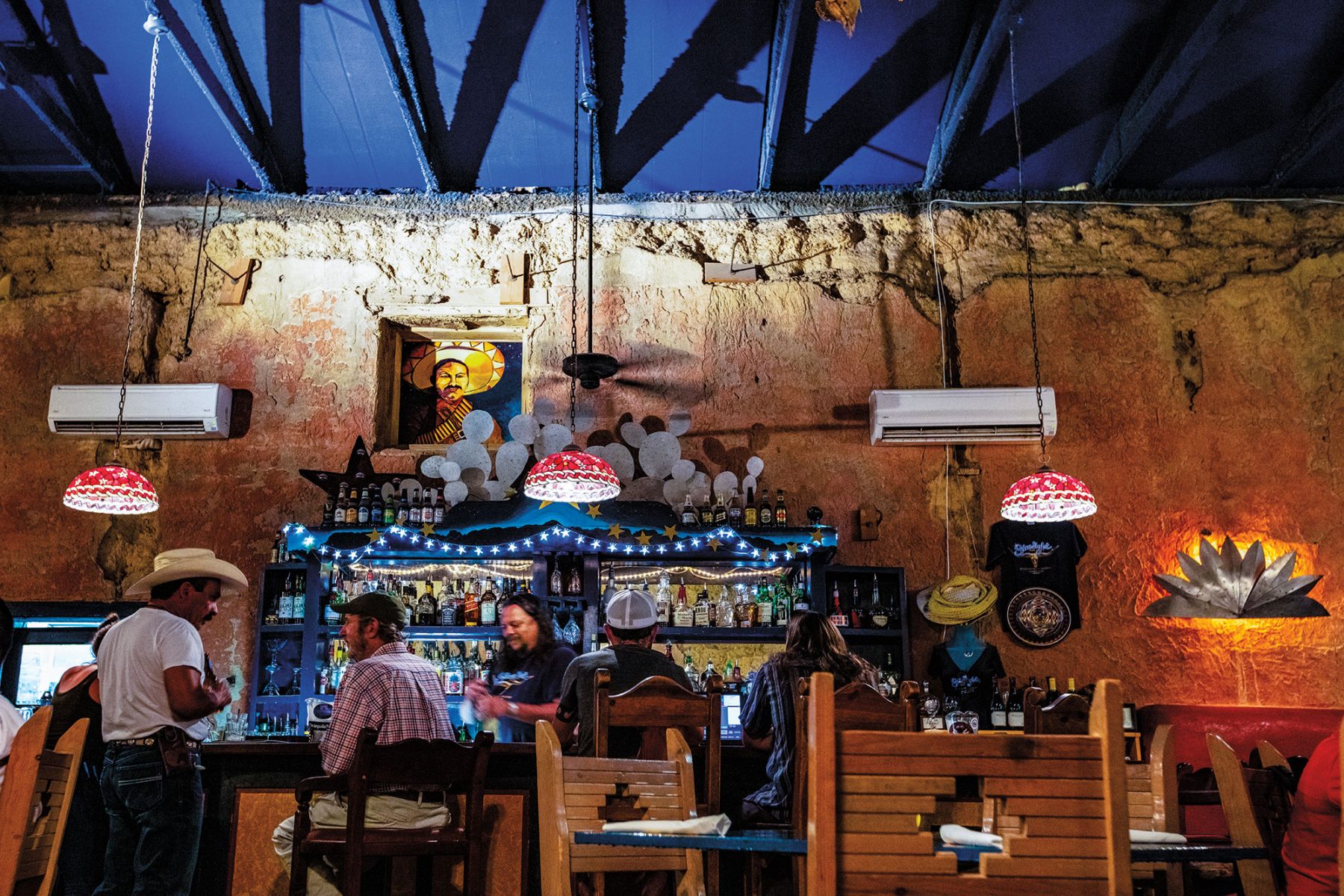
Perry ran the mine by mail from Maine, where he owned and sailed yachts. According to Kenneth Baxter Ragsdale, who wrote Quicksilver: Terlingua and the Chisos Mining Company, Perry was approximately 5 feet tall and walked like a Charlie Chaplin character, his feet splayed out and trouser legs flapping. His bedroom was on one side of the Great Room while Mrs. Perry’s was at the other. “She only came out here once, but he always brought his stenographer,” Ivey says with a smile.
On the ground floor, glass doors open to a big new deck that looks east to the mountains. Down below lie the ruins of the old village. The walls of the school are still standing; the church has a new tin roof. “Most places, people look west to watch the sunset,” Ivey says. “Here they look east to see it reflected on the mountains.”
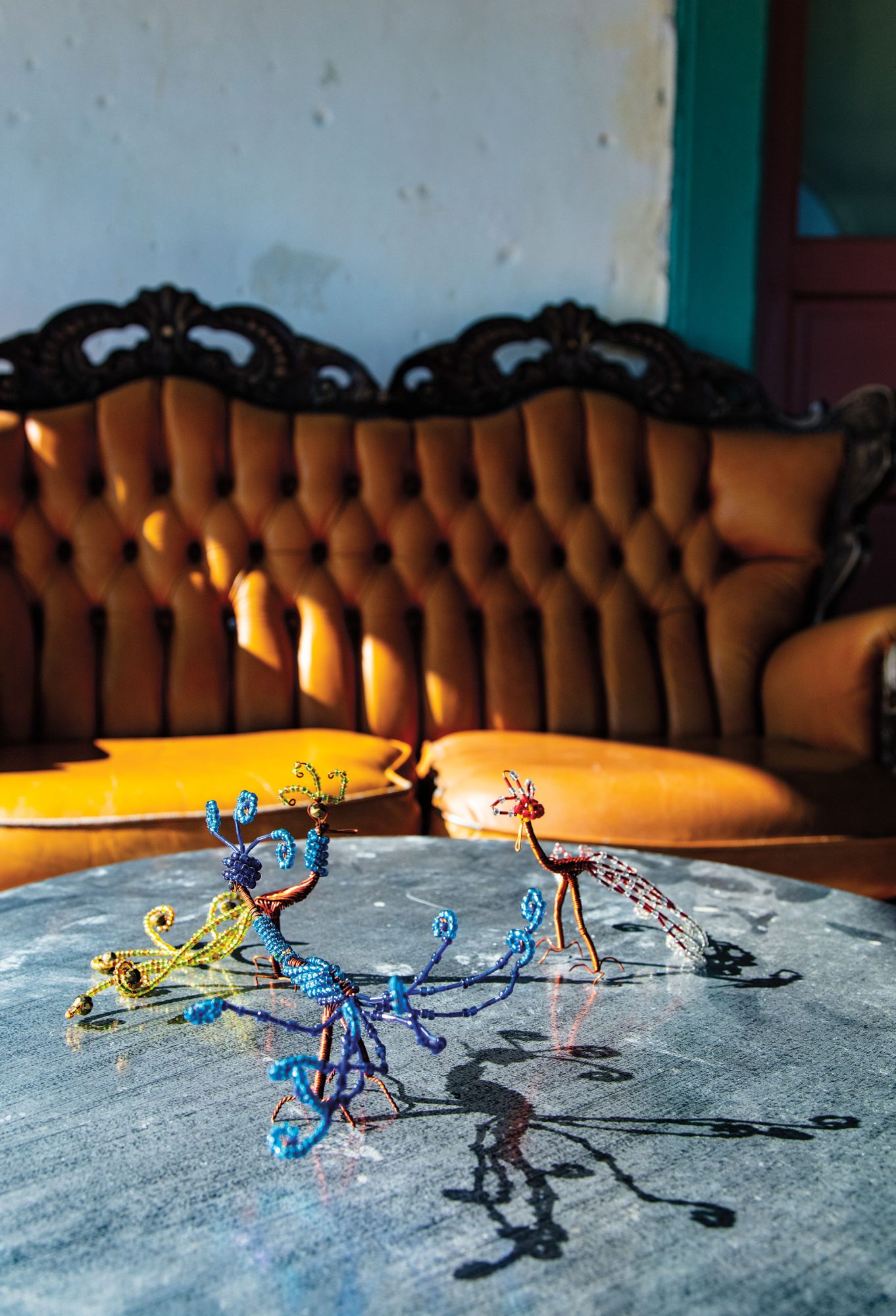
Bead-and-wire art from Boquillas at Perry Mansion. Photo: E. Dan Klepper
Terlingua is one of those eccentric towns like Key West, where the sunset is an event. Locals and tourists in front of the Terlingua Trading Company face east to enjoy the afterglow. Next door, at the Starlight Theatre, most of the tables are taken to watch singer-songwriter Bruce Salmon perform.
Back at the Perry Mansion, dusk has settled over the town. There are no street lights. Everything looks softer. The first stars are barely visible against the pale evening blue, but as the sky turns black, they come out bright and strong, forming constellations, the Milky Way a sweeping brush stroke.
—John Davidson

